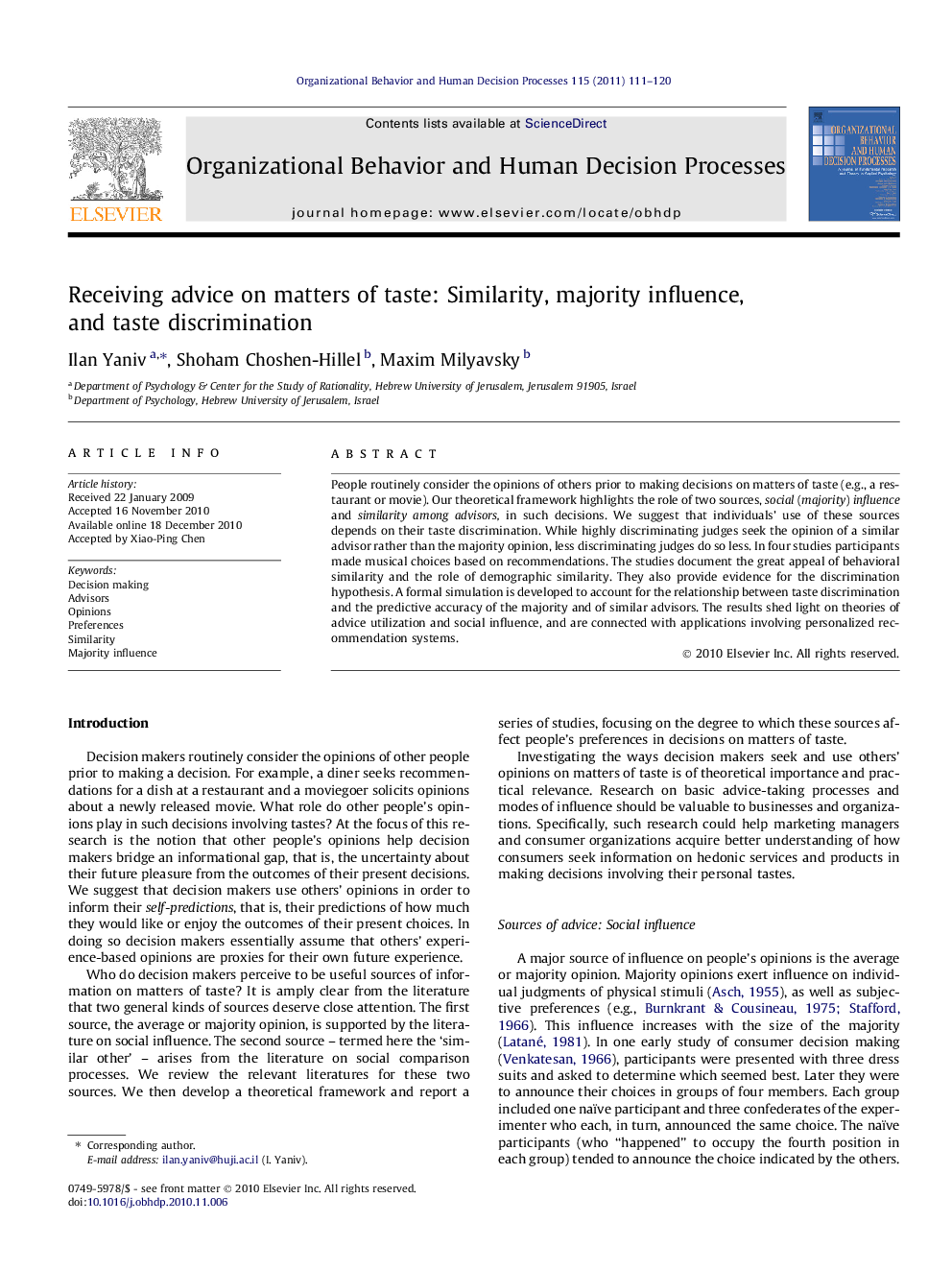| Article ID | Journal | Published Year | Pages | File Type |
|---|---|---|---|---|
| 888821 | Organizational Behavior and Human Decision Processes | 2011 | 10 Pages |
People routinely consider the opinions of others prior to making decisions on matters of taste (e.g., a restaurant or movie). Our theoretical framework highlights the role of two sources, social (majority) influence and similarityamong advisors, in such decisions. We suggest that individuals’ use of these sources depends on their taste discrimination. While highly discriminating judges seek the opinion of a similar advisor rather than the majority opinion, less discriminating judges do so less. In four studies participants made musical choices based on recommendations. The studies document the great appeal of behavioral similarity and the role of demographic similarity. They also provide evidence for the discrimination hypothesis. A formal simulation is developed to account for the relationship between taste discrimination and the predictive accuracy of the majority and of similar advisors. The results shed light on theories of advice utilization and social influence, and are connected with applications involving personalized recommendation systems.
